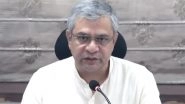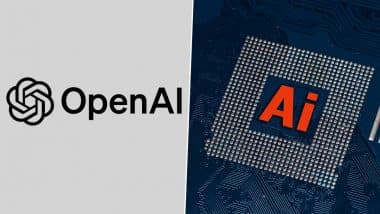Mumbai, May 8: OpenAI has been working on improving artificial intelligence technology and GenAI-based image generation capability. With the introduction of GPT-4, the Sam Altman-run AI company offered a powerful chatbot that would solve complex problems faster and with great accuracy. Microsoft-backed OpenAI is reportedly working on a new AI image detection tool to see if the image was generated using the DALL-E-3.
In its official post, OpenAI said people embraced the generative AI technology to create and edit images, videos and audio to boost creativity, learning and productivity. It further said that with GenAI images becoming common, society should embrace the new technology and standards that help people know about the tools the creators used to generate the content they saw online. OpenAI COO Brad Lightcap Says Today’s ChatGPT Will Be ‘Laughably Bad' in Next Couple of 12 Months (Watch Video).
OpenAI explained in its post that the standards could help clarify how content was generated and give more details about its origin. The ChatGPT developer said that standards will help determine whether it was a raw image taken right from a camera or an artistically generated image created using DALL-E3.
OpenAI Developing New Tools To Identify AI-Generated Content
OpenAI affirmed its commitment to enhancing the integrity of digital content. To ensure transparency, OpenAI plans to implement 'tamper-resisting watermarking' to identify whether an image was generated by its services. This watermarking, an 'invisible signal' impossible to remove, will mark digitally generated content such as audio, offering a more secure and reliable way to verify the content's origin. Apple ‘Project ACDC’: Tech Giant Working on Own AI Chips for Data Centres, Says Report. Meta Introduces New Generative AI Features for Advertisers To Create Ads.
OpenAI also explained how the detection classifiers would work. It said that these tools will use artificial intelligence to determine the possibility of the content's origination using GenAI models. OpenAI assured that the detection classifiers would be more resistant to people's attempts to remove invisible signals about the originality of the content. The audio watermarking and image classifiers are still in development and need improvements.
(The above story first appeared on LatestLY on May 08, 2024 03:50 PM IST. For more news and updates on politics, world, sports, entertainment and lifestyle, log on to our website latestly.com).













 Quickly
Quickly


